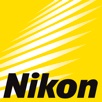The NIKONOS history
En 1961, l'ingénieur aéronautique belge Jean de Wouters rend visite a la Spirotechnique à Levallois Perret pour présenter son invention revolutionaire : le premier appareil photo étanche par construction : le Calypso-Phot.
La Spirotechnique signe avec de Wouters un accord pour sa distribution qui en confie la fabrication à un petit atelier niçois.
Format 24x36, objectif SOM.Berthiot 35 mm, ouvrant à 3,5 ou aussi un ANGENIEUX ouvrant à 2.8 (plus rare).
Viseur colimaté , très ngénieuse échelle de profondeur de champ et prise de flash.
Etanche par construction , donné pour un profondeur de 60 mètres , mais utilisé jusqu'à 120 mètres par certains utilisateurs sans aucun problèmes.
A noter le très particulier système d'étanchéité : l'appareil est glissé dans un corps rigide verticalement et l'étanchéité est assuré par un grand joint torique.
L'ouverture de l'appareil impose de retirer l'objectif pour se servir des deux petits leviers qui font aussi office d'attache dragonne pour sortir le corps de l'appareil.
Ce corps en aluminium ne contient aucun mécanisme et porte seulement la prise de synchronisation du flash
Autre innovation majeure (et brevetée): l'objectif est monté dans un caisson particulier qui assure son étanchéité, celui ci est monté flottant sur ressorts : la pression pouvant déformer le corps de l'appareil si l'objectif en était solidaire la distance plan film/objectif changerait, De Wouters invente une fixation mobile particulière permettant au caisson rigide de se déformer tout en maintenant une parfaite tenue au tirage.
Lorsque Nikon décide d'acheter la licence de fabrication à la Spirotechnique Jean de Wouters est également embauché et part travailler au Japon pour 1 an (de 1962-1963) .
Le mécanisme unique du Calypso Phot étonne les Ingénieurs Nikon qui iront jusqu'a affirmer que la conception etait revolutionnaire et ne pouvait avoir été pensée par un fabricant d'appareil photo ... ce qui etait parfaitement vrai !
On peut sembler surpris du choix de la Spirotechnique de vendre la licence de fabrication , mais la socièté Française n'a pas manqué de réalisme en comprenant bien vite a quel point le Calipso Phot avait un potentiel extraordinaire, et de la difficulté de fabriquer cet appareil en France que cela soit pour le choix des objectifs ou de la capacité industrielle.
Le choix de Nikon fut donc logique d'autant que la Spirotechinque assura pour un temps la distribution exclusive en Europe.
Le Calypso Phot est aujourd'hui un appreil rare et prisé , fabriqué en très faible nombre d'exemplaire et qui marque un jalon important de l'histoire photographique subaquatique.
The Ancestor... L’Ancêtre ...
CALYPSOPHOT
In 1961, a Belgian aeronautical engineer, Jean de wouters, presented his latest invention to La Spirotechnique, located near Paris : a revolutionary underwater camera, the Calypso-Phot.
The company signed a distribution contract with Jen de Wouters, and asked a small company from Nice to build it.
It is a 35 mm camera, with a SOM BERTHIOT lens, a 35 mm with a 3.5 aperture, or an ANGENIEUX lens (2.8), much rarer.
It also featured a colimated viewfinder, very clever depth of field scale, and flash sync.
Waterproof by conception, certified to a depth of 60 meters ( 200 feet), it was used to a depth of 400 feet by some divers without any problems.
To achieve waterproof operation, a very special system was developed:
the camera mechanism is fitted vertically in a rigid body, and the waterproofness is made by a large O-ring.
To open the camera, you have to take off the lens to be able to use the two levers (that are also used to attach the camera strap), and then the camera mechanism pulls out of the body.
This aluminium body does not contain any mechanism, and supports only the flash sync.
Another major innovation: the lens is part of a very special casing, that provides the waterproofness. The lens is mounted «floating» on springs, again with an O-ring: the pressure could have distorted the camera body if the lens was attached to it, and the lens/film distance would change. De Wouters invented a special mobile bayonet that allows the body to distort and keep a perfect alignment as far as lens distance is concerned.
When Nikon decided to buy the license for the Calypso Phot from La Spirotechnique, Jean de Wouters was also hired, and went to Japan to work there for one year for Nikon (1962-1963)
The unique Calypso Phot mechanism had always amazed
the Nikon engineers, who certified at that time that such a revolutionary concept could not have been made by a camera manufacturer, and this was true.
The choice of La Spirotechnique to sell the license to Nikon, seemed surprising, but the choice of the French company made a great deal of sense, because they had realized this camera had an extraordinary potential, difficult to develop in France because of the lack of the proper industrial resources in optics or camera manufacturing.
The choice of Nikon was very wise, and La Spirotechnique was, for a time, also the exclusive distributor of the Nikonos in Europe.
The Calypso Phot is today a rare and sought after camera, made in very small numbers, and is an important piece in
the history of underwater photography.
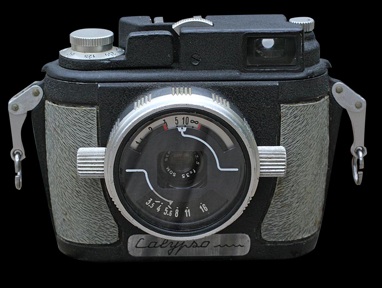
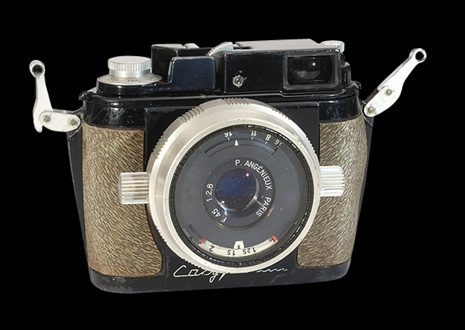
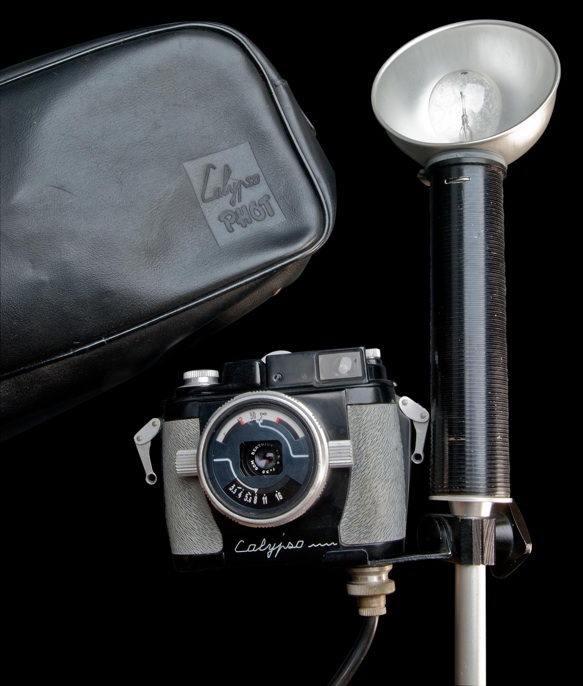
Photos © :
Courtesy of our friend
Uli KOCH
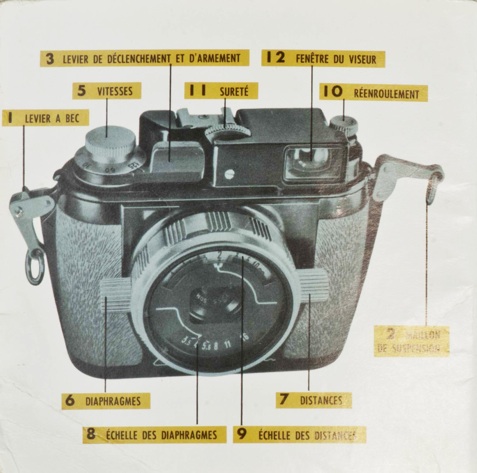

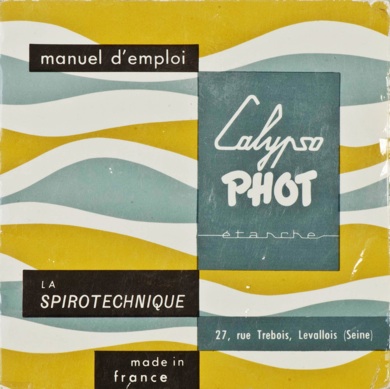

Photo © :
Courtesy of our friend
Tony HURST
Picture made specially
for the NHS magazine
